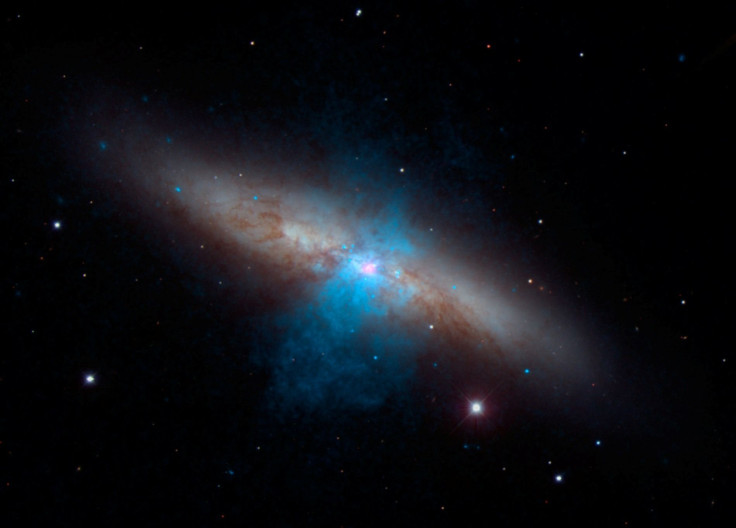NASA Telescope Discovers Brightest Dead Star Ever Spotted

Astronomers have used NASA’s Nuclear Spectroscopic Telescope Array, or NuSTAR, telescope to discover a dead star, which appears to be burning with the energy of about 10 million suns. This “shockingly bright” star, according to scientists, is the brightest pulsar -- a dense remnant of a supernova explosion -- ever recorded.
The dead star was found in the galaxy Messier 82, or M82, which is about 12 million light-years away from Earth. The star’s exceptional brightness has helped astronomers classify it as an ultraluminous X-ray, or ULX source -- an object that is believed to be more luminous than any known stellar process. The results of the discovery were published in the journal Nature on Thursday.
“You might think of this pulsar as the 'Mighty Mouse' of stellar remnants,” Fiona Harrison, NuSTAR principal investigator at the California Institute of Technology in Pasadena, California, said in a statement. “It has all the power of a black hole, but with much less mass.”
According to the researchers, the latest discovery was a bit of a surprise as NuSTAR was not initially used to study ULXs in the M82 galaxy. While observing a recent supernova in the galaxy, astronomers coincidentally noticed pulses of extremely bright X-rays coming from a nearby location, which eventually turned out to be M82 X-2, one of the two known ULX sources in the galaxy.
“We took it for granted that the powerful ULXs must be massive black holes,” Matteo Bachetti of the University of Toulouse in France, and the study’s lead author, said in the statement. “When we first saw the pulsations in the data, we thought they must be from another source.”
Further analysis of the M82 galaxy by NASA's Chandra X-ray Observatory and Swift satellite helped astronomers determine that the intense X-rays of M82 X-2 were coming from a pulsar. The telescopes also helped the researchers to measure a pulse rate of 1.37 seconds and an energy output that is 10 times more than that of any other X-ray pulsars.
“There are a number of ULX sources known, and until now, most people have assumed that they are black holes, and pretty massive,” Deepto Chakrabarty, a professor of physics and head of the astrophysics division at Massachusetts Institute of Technology, said in a statement. “Now there may be other, similar ULX pulsars. And that would mean the whole picture that was being built up to try and explain this whole class of weird objects is wrong.”
© Copyright IBTimes 2024. All rights reserved.






















